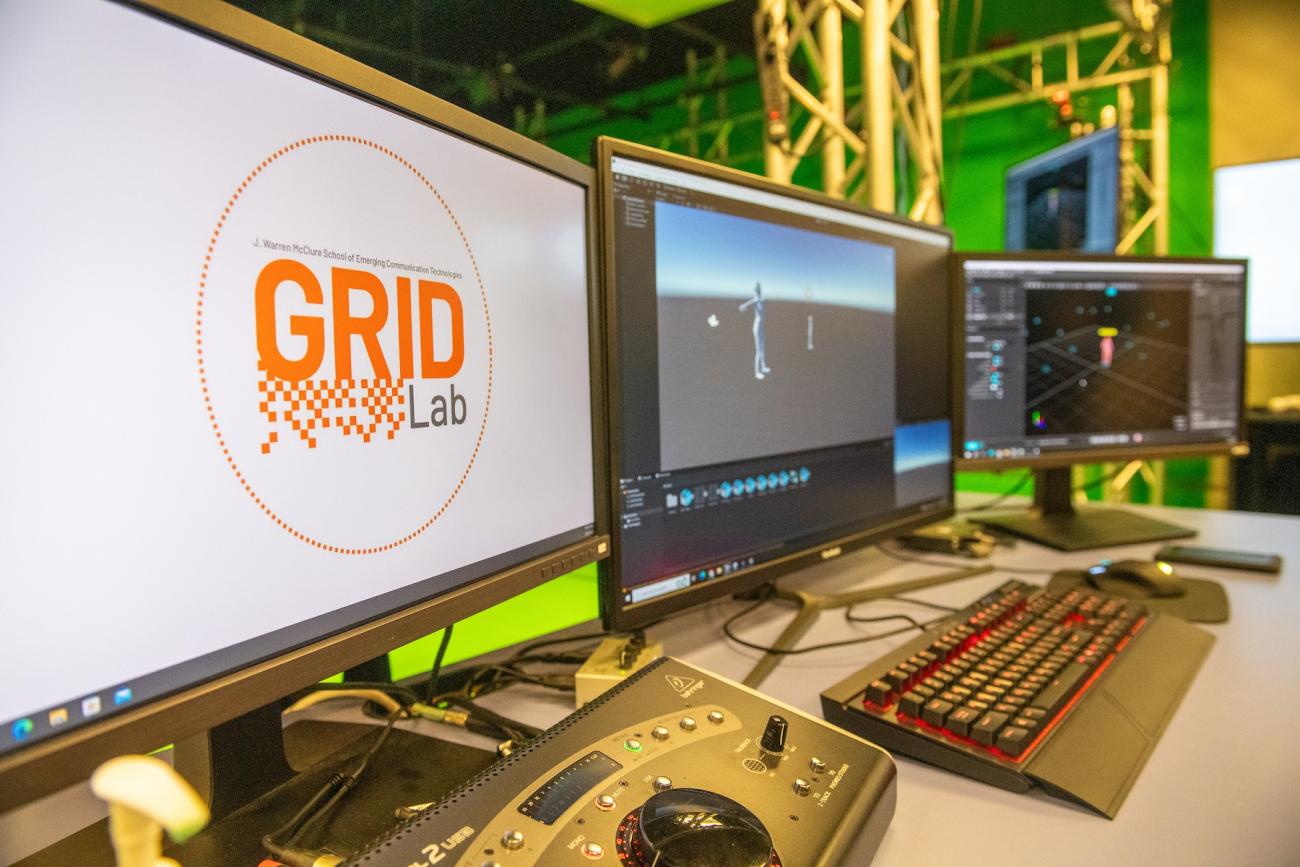OHIO ranked in Top 50 in U.S. for virtual reality and game development
Ohio University is ranked among the Top 50 Augmented/Virtual Reality Colleges in the United States by Animation Career Review.
The annual rankings also list OHIO in the Top 25 nationally among public colleges and universities, and among the Top 10 in the Midwest.
“I’m proud that the hard work of faculty and students in the McClure School has been recognized through this ranking,” Scripps College of Communication Dean Scott Titsworth said. “The work done in that school is having far-reaching impact in our community, region, and state, all while maintaining a firm commitment to providing students with forward-leaning practical experiences.”
John Bowditch, associate professor and director of the Game Research and Immersive Design (GRID) Lab, said it is a tremendous honor for the program to be ranked among the top in the nation.
“I am proud that we’ve not only sustained a program in VR and Games but thrived,” Bowditch said. “It was a difficult sell at first to create a program like this in southeast Ohio, but the university believed in it and gave us the resources to compete with some of the greatest universities in the country. While we’re a small program, we’re mighty.”

Charles “Chip” Linscott, assistant professor and director of the J. Warren McClure School of Emerging Communication Technologies, explained that OHIO’s innovative faculty members and focus on experiential learning set the Virtual Reality and Game Development Program apart from those at other universities. OHIO students are able to gain valuable experience that they would not receive at other institutions.
“We want students to be able to work in these spaces from the first day they set foot on campus. It’s not something that they have to wait until their junior or senior years to experience,” Linscott said. The program, which offers undergraduate and graduate programs, offers a wide range of state-of-the-art technology for students to work on.
“We have been very successful with receiving grant funding for our technology, and we want our students to be using that equipment as much as possible,” Linscott said. The program also received an Ohio University Innovation Strategy Award, which was extremely helpful.
Students in the program learn about virtual and augmented reality applications while creating traditional video games, designing digital art, learning coding and working on a wide array of projects.
In addition to gaining the skills needed for virtual reality and game design, OHIO students study the history of media and art, and learn how different applications are used today and how they will likely be used in the future.
“Also, because these technologies are so powerful and impactful, we look at how they can be used to make a difference in the world,” Linscott said. While game design and virtual reality are often used for entertainment purposes, they are also used for healthcare training, law enforcement training, meditation, mental health and well-being, and many other purposes.
“The applications are limitless,” Linscott said.
OHIO students develop their skills using the equipment they would be using if they were working in the field today. For example, OHIO students might work in the mixed reality obstacle course or the motion capture facility in the morning and then later that day take classes in a specially-designed classroom that has virtual reality systems at each seat.
Linscott is proud that the program is receiving this national recognition, but he is even more proud of how OHIO students are succeeding in their programs, and how OHIO alumni are succeeding in their careers and achieving their dreams.
“We have a lot of graduates today working at high levels in these industries,” Linscott said.
For more information on the program, visit the J. Warren McClure School of Emerging Communication Technologies website or contact Linscott at linscoc2@ohio.edu.
